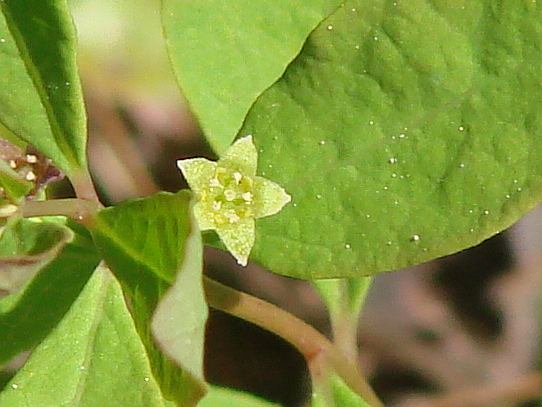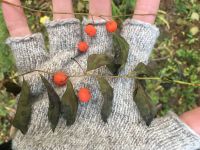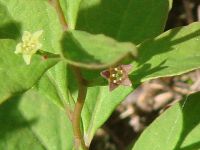Distribution: Occurring east of the Cascades crest in northern Washington; Alaska to Washington, east across the northern U.S. and Canada to the Atlantic Coast.
Habitat: Bogs and open woods to lower alpine slopes.
Flowers: June-July
Origin: Native
Growth Duration: Perennial
Conservation Status: Not of concern
Rhizomatous, glabrous, hemiparasitic perennial herbs with stems 0.7--3 dm tall; rhizomes 1.5--3 mm wide.
Leaves narrowly ovate to obovate-oblanceolate, (1) 1.5−4 cm1.5--5 x 0.5--1 cm, thin and flaccid.
Flowers greenish-white, both hermaphroditic and functionally male (andromonoecious), generally 3 (1−4) in axils of middle to upper leaves; sepals 5, about 1.5 mm long and about as broad; petals absent; hypanthium present, flared, disc nearly flat; stamens 5 and opposite the sepals; pistil 1 with (2) 3 (5) carpels, mostly unilocular; ovary inferior.
Yellow-orange to red, juicy drupe, 6-10 mm; remnants of sepals often on top of fruit.
Publication: Rhodora 30: 23. 1938.
Comandra lividum Richardson
PNW Herbaria: Specimen records of Geocaulon lividum in the Consortium of Pacific Northwest Herbaria database.
WA Flora Checklist: Geocaulon lividum checklist entry.
OregonFlora: Geocaulon lividum information.
E-Flora BC: Geocaulon lividum atlas page.
CalPhotos: Geocaulon lividum photos.
USDA Plants: Geocaulon lividum information.










